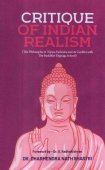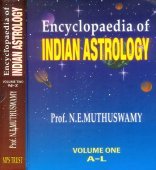Juncture: 2 definitions
Introduction:
Juncture means something in Hinduism, Sanskrit. If you want to know the exact meaning, history, etymology or English translation of this term then check out the descriptions on this page. Add your comment or reference to a book if you want to contribute to this summary article.
In Hinduism
Yoga (school of philosophy)
Source: ORA: Amanaska (king of all yogas): A Critical Edition and Annotated Translation by Jason BirchThe “Junctures” of the day (in Sanskrit: Sandhi) represents an auspicious time to practice Yogic breathing exercises, according to the Yogayājñavalkya, an ancient Sanskrit text from the 8th century dealing with the eight components of Yoga in over 500 verses.—Accordingly, [while describing a practice of breathing]: “Having drawn the breath in through the tongue [whose edges are curled up to form a tube], the man who constantly drinks [the breath this way] does not [suffer from] fatigue (śrama) or [excessive] heat [in the body] and all [minor] diseases are cured. Having drawn in the breath at the junctures of the day or an hour before sunrise, he who drinks it [thus] for three months, good lady, [gains] eloquent speech and within six months of practice, he is freed from all serious diseases”.

Yoga is originally considered a branch of Hindu philosophy (astika), but both ancient and modern Yoga combine the physical, mental and spiritual. Yoga teaches various physical techniques also known as āsanas (postures), used for various purposes (eg., meditation, contemplation, relaxation).
Shaktism (Shakta philosophy)
Source: ORA: Amanaska (king of all yogas): (shaktism)Juncture (rituals) are denoted by the Sanskrit term Sandhyā, according to the 17th century Kaulagajamardana (“crushing the Kaula elephant”) authored by Kāśīnātha or Kṛṣṇānandācala.—Accordingly, [as Īśvara said to Pārvatī]: “Listen, O Pārvatī, I shall give a critique of the Pāṣaṇḍas. Knowing this, a wise man is not defeated by them. [...] He who wears ash from the cremation ground and delights in wine and flesh; he who performs such [rites] as bathing and the junctures (sandhyā) for [mere] worldly rewards; and he who is the vilest [of them all,] having become a hater of Viṣṇu, destroys everything; [all of them] are called Pāṣaṇḍas. [Now,] my dear, hear about the Kāpālika. [...]”

Shakta (शाक्त, śākta) or Shaktism (śāktism) represents a tradition of Hinduism where the Goddess (Devi) is revered and worshipped. Shakta literature includes a range of scriptures, including various Agamas and Tantras, although its roots may be traced back to the Vedas.
See also (Relevant definitions)
Full-text (+173): Sandhya, Gairahangama, Samdhi, Daivayoga, Gadasanda, Lagnaghatika, Sandhi, Trisandhya, Brahmagayatri, Suyoga, Bhagyayoga, Dikshamantra, Dishti, Sandha, Adasandhi, Samdhya, Vishamavela, Pratisamdhana, Gairasandhi, Samayavetta.
Relevant text
Search found 94 books and stories containing Juncture; (plurals include: Junctures). You can also click to the full overview containing English textual excerpts. Below are direct links for the most relevant articles:
Dasarupaka (critical study) (by Anuru Ranjan Mishra)
Part 10 - Application of the Junctures (sandhi) in a Prakaraṇa < [Chapter 10 - Prakaraṇa (critical study)]
Part 10 - Application of the Junctures (sandhi) in a Vyāyoga < [Chapter 5 - Vyāyoga (critical study)]
Part 10 - Application of the Junctures (sandhi) in a Utsṛṣṭikāṅka < [Chapter 8 - Utsṛṣṭikāṅka (critical study)]
Manusmriti with the Commentary of Medhatithi (by Ganganatha Jha)
Verse 1.70 < [Section XL - The ‘day’ of Brahmā and the ‘Yugas’]
Verse 1.69 < [Section XL - The ‘day’ of Brahmā and the ‘Yugas’]
Verse 4.114 < [Section XIII - Days unfit for Study]
Dramaturgy in the Venisamhara (by Debi Prasad Namasudra)
Sandhi (the combination of different phases) < [Chapter 4 - Dramaturgy in Veṇīsaṃhāra]
Chapter 5 - Major findings and Concluding observations
Description of Vīthī < [Chapter 2 - Nature and Classification of Sanskrit Drama]
The Agni Purana (by N. Gangadharan)
Chapter 338 - Description of the different types of Drama (nāṭaka)
Trishashti Shalaka Purusha Caritra (by Helen M. Johnson)
Part 2: Incarnation as Ananta (introduction) < [Chapter IV - Anantanāthacaritra]
Part 11: The founding of Dvārakā < [Chapter V - Birth of Rāma, Kṛṣṇa, and Ariṣṭanemi]
Paraskara-grihya-sutra (by Hermann Oldenberg)
Related products

